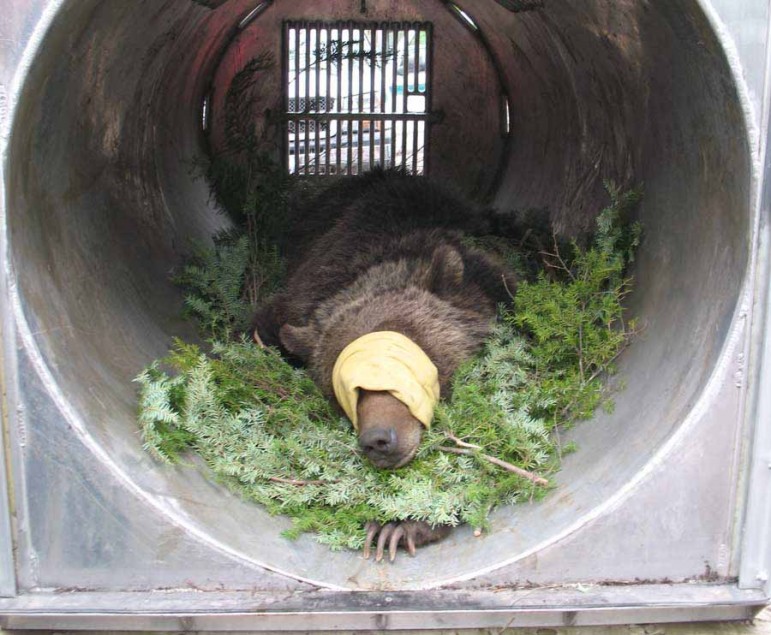
A tranquilized grizzly bear lies in a trap similar to those used for research studies or for capturing and relocating problem bears around the greater Yellowstone area.
Idaho wildlife biologists will be trapping grizzly bears in areas near Yellowstone National Park as part of ongoing research efforts required under the Endangered Species Act.
The Idaho Department of Fish & Game is advising the public that scientific trapping operations are once again about to begin in the Upper Snake Region.
Biologists working on behalf of the larger Interagency Grizzly Bear Study Team will begin to work mainly in that portion of the Caribou-Targhee National Forest inside of the caldera in Island Park, along with sites to the west along the Centennial Mountain Range.
According to a statement released by the Department, these efforts will run concurrent with similar efforts by Wyoming Game & Fish biologists on the Wyoming side of the state line.
Trapping efforts will run until the end of August. Trapping operations can include a variety of activities, but all areas where work is being conducted will have major access points marked with bright orange warning signs.
“Monitoring of collared grizzly bears is important for obtaining a solid population estimate and critical to documenting that recovery efforts have been successful,” said Regional Wildlife Manager Curtis Hendricks, “
In order to attract bears, biologists use natural food sources such as fresh road–killed deer and elk. Potential trapping sites are baited with these natural foods, and if indications are that grizzly bears are in the area, snares or culvert traps will be used to capture the bears. Once trapped, the bears are sedated and studied in accordance with protocols developed by the IGBST.
Whenever bear trapping activities are being conducted and for a period of three days afterwards, the area around the site will be posted with bright orange warning signs to inform the public of the activities occurring. These signs are posted along the major access points to the trapping site. It is important that the public heed these signs and not enter an area that has been posted.
Wildlife officials studying grizzly bears previously did not alert the public via notices to regional news media about trapping operations. But researchers changed that policy after botanist Erwin Evert was killed by a grizzly bear in June 2010 near Kitty Creek in the Shoshone National Forest, just east Yellowstone National Park. The bear had been trapped and drugged as part of a government study and was released just before the fatal attack.
For more information regarding grizzly bear trapping efforts or Idaho’s role in grizzly bear management, call 208-525-7290 or visit the Interagency Grizzly Bear Committee website at igbconline.org.

The thing about trapping programs is the animal is never left in a better place or healthier. It is left in a weakened position, abused, used for our hubris. Do we ever give back as much as we take? Certainly never more than we take. All our actions are about us and rarely does enough go to the animal. And don’t get me started on trapping animals with dependent young.